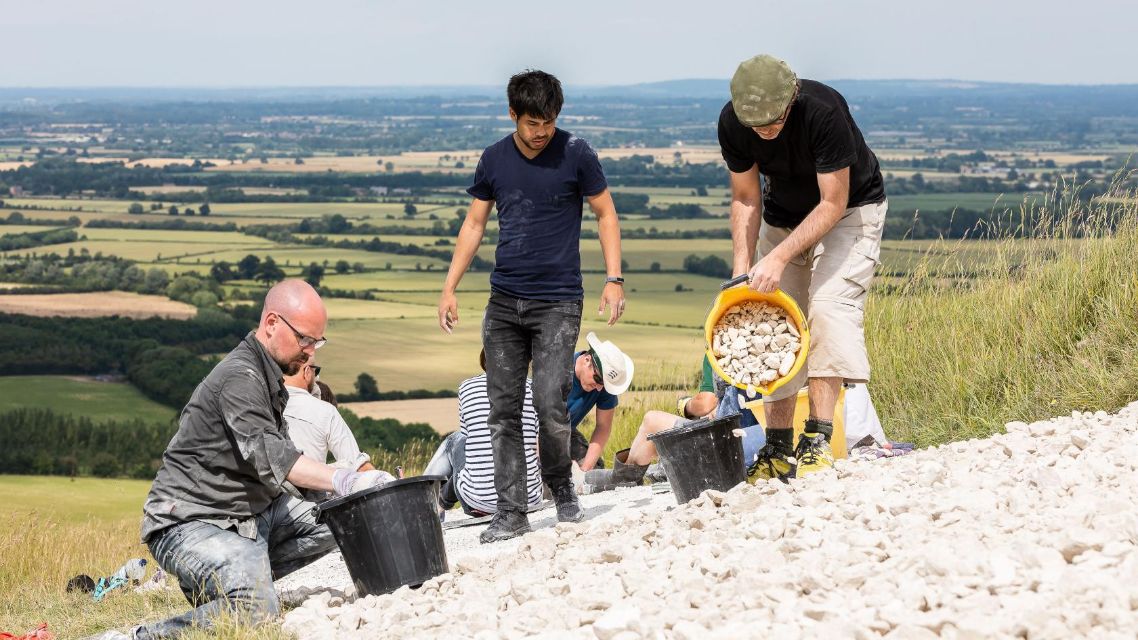On a hillside overlooking the Vale of the White Horse in Oxfordshire, England, the Uffington White Horse keeps watch. This massive figure reaches 110 metres in length and 40 metres in height and is made of deep trenches filled with white chalk. The figure’s horse shape is still recognisable as such, but because of “slippage of the top soil” and “repeated recutting”English Heritage. “History of Uffington Castle, White Horse and Dragon Hill.” https://www.english-heritage.org.uk/visit/places/uffington-castle-white-horse-and-dragon-hill/history/., some creative input from the viewer is required. The Horse is under the care of the British National Trust and enjoys a myth-like status, not just because of its sheer size, but also because of its surroundings: other landmarks associated with folklore and literature are just around the cornerPhilip Schwyzer. “The Scouring of the White Horse: Archaeology, Identity, and ‘Heritage.’” Representations, no. 65, 1999, p. 42.. Dragon Hill can be found to the east, which is not only the place where St. George supposedly defeated a dragonNational Trust. “White Horse Hill.” https://www.nationaltrust.org.uk/white-horse-hill#Overview., but also where King Arthur is rumoured to be buriedMatthew Wills. “Whence the White Horse of Uffington?” JSTOR Daily, 23 September 2021, https://daily.jstor.org/whence-the-white-horse-of-uffington/..
Across Britain, there are twenty-four chalk horses. Thirteen of them are just across the border from the Uffington Horse, in Wiltshire. Uffington’s Horse, however, is by far the oldestWiltshire White Horses. “The Uffington White Horse.” https://www.wiltshirewhitehorses.org.uk/uffington.html.. It has been on its White Horse Hill since the Late Bronze Age, originating from the period between 1400 and 600 B.C.E.Schwyzer, “The Scouring” p. 42.. This dating was determined in the 1990s, when the Oxford Archaeological Unit narrowed down when the Horse’s layers of chalk had last seen sunlightChristine Finn. “Timeless Thoroughbred: England’s Uffington Horse Mystifies Scholars and Mesmerizes Visitors.” Archaeology, vol. 54, no. 3, 2001, p. 40..
